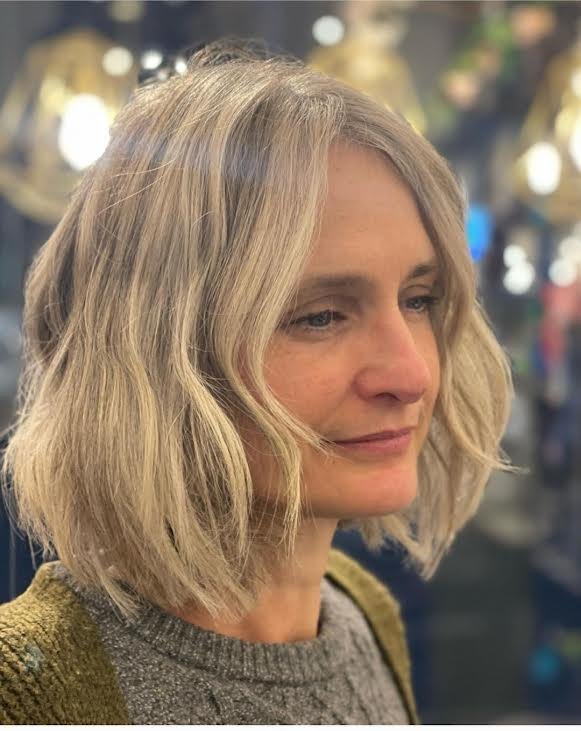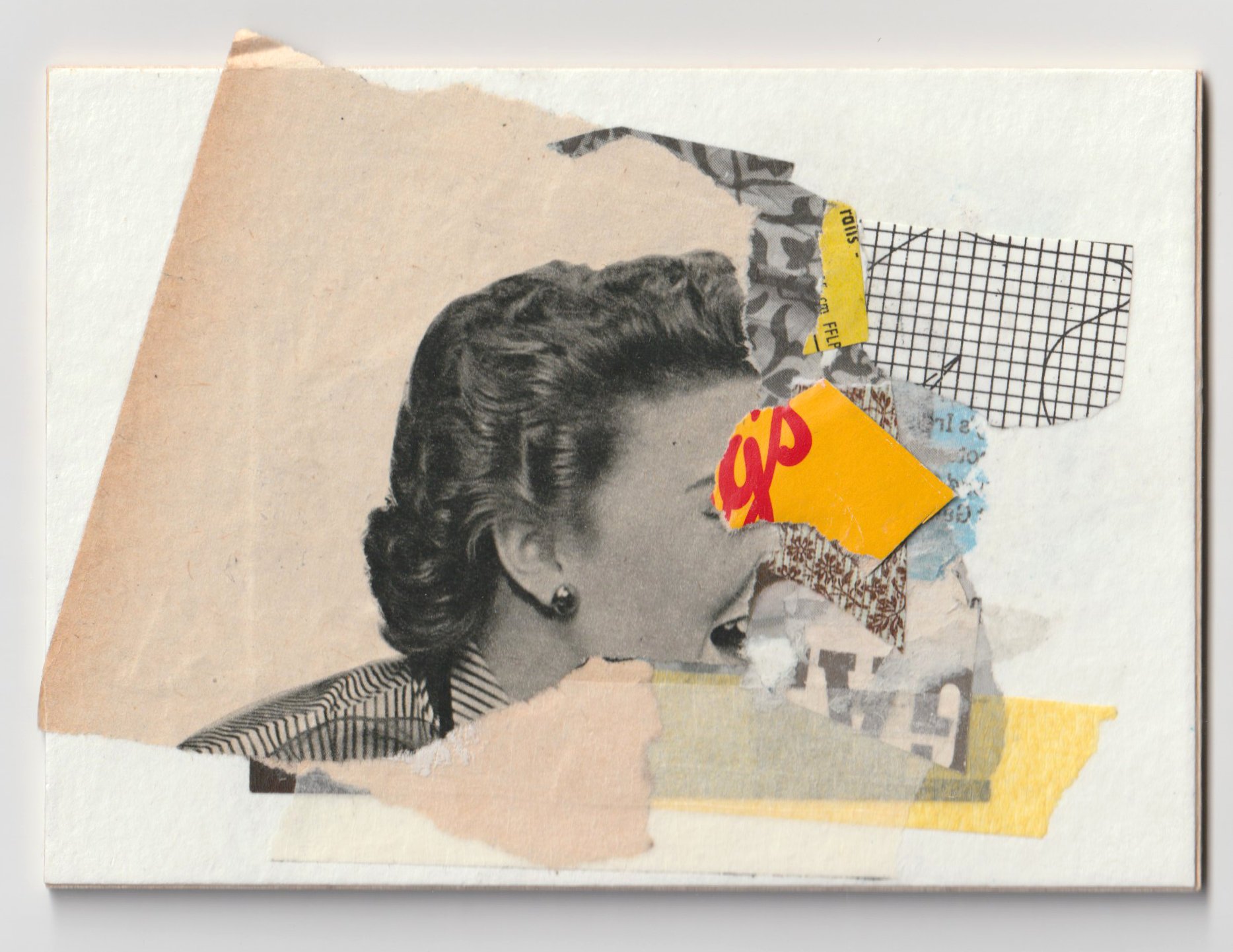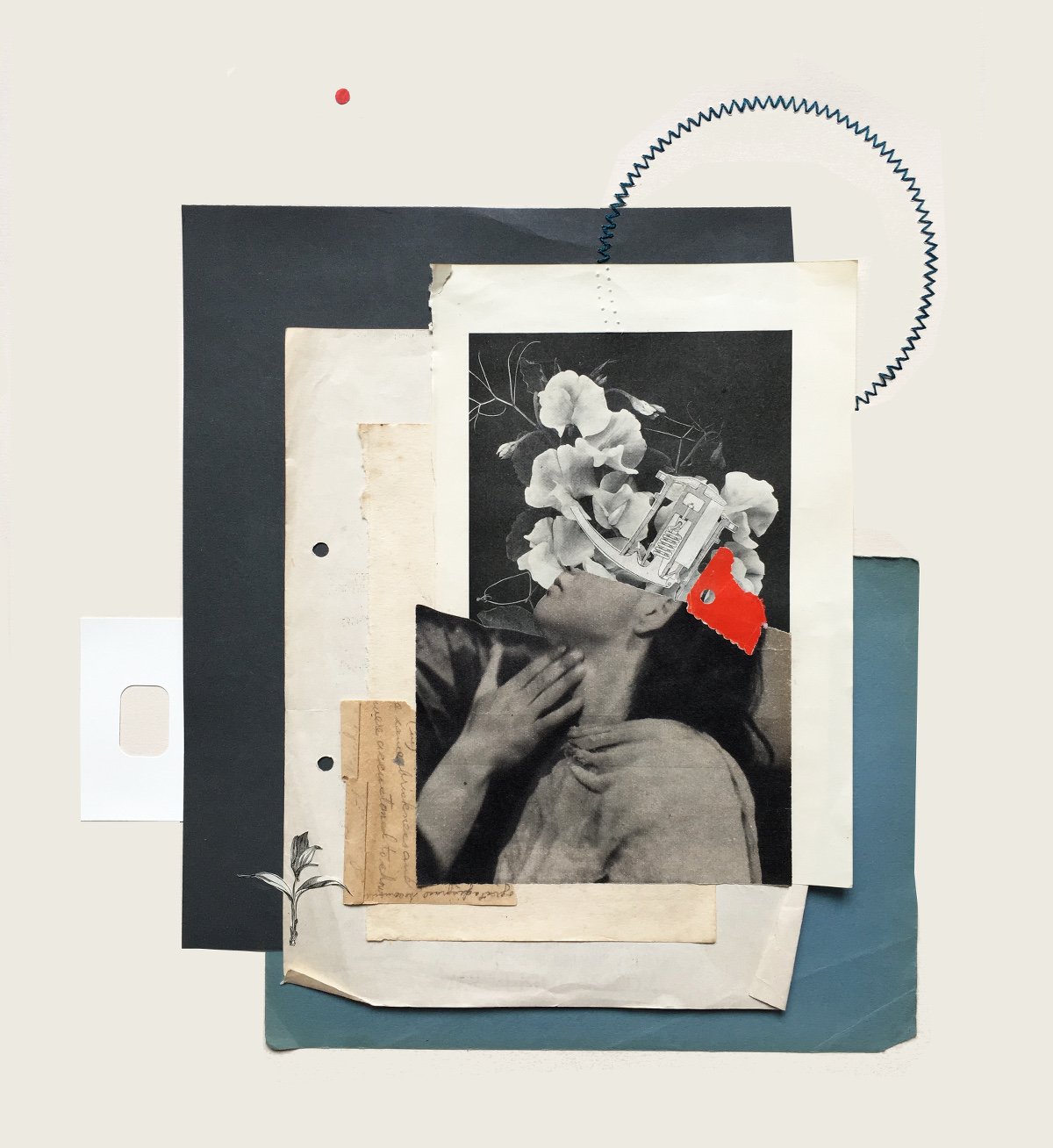ARTIST INTERVIEW: Rhed Fawell
Please can you give me an introduction about yourself.
My name is Rhed Fawell. I am a practicing collage artist, who lives and works in Edinburgh, Scotland. When I’m not in my studio making collages, I’m either busy being a mum to two young children or walking my rescue Greyhound, Betty.
How did you get into art? What inspired you?
When I left school, I did my first degree in Fine Art and Cultural studies in the early 1990s and specialised in sculpture. From a very young age, art and creativity were a means of expression that made sense to me, so it seemed an obvious step to try and make it a life choice. Still, the cost of materials and a suitable workspace made it difficult to continue making sculptural art, so I moved into collage, which seemed more accessible.
Even at a young age, I could not wait to leave home and explore! I have always found people, places, and the world around me inspiring, so living and studying in London at eighteen was appealing. What inspired me was the possibility of escaping a rural existence...
Describe your creative process; from start to finish of a collage.
My process typically begins with creating a background of torn pieces I glue and let dry. I then peel away the paper to reveal exciting textures. Over time, I add figurative images to the collage at my own pace, allowing the materials and process to guide me intuitively. What fascinates me about collage art is the element of surprise that always comes with it.
Where do you find your inspiration?
I gather inspiration for my collages by reading books, listening to music, and observing the world around me. I incorporate recurring symbols and themes in my work, including the machine, nature, and a sense of fragility. These are areas of great interest to me and serve as sources of inspiration.
What is it that you love about collage? What elements go into creating one of your collages?
I love working with vintage papers and ephemera, and enjoy the uniqueness of founds materials, particularly when they are torn with markings that reveal history layers. The process of sorting, ripping and cutting these discarded pieces of ephemera is fascinating, as I strive to give them a new life and purpose.
There are several elements and processes such as thread and how it is used which tend to recur and play an important part in both the conceptual and the physical act of making. Other examples are the layers of ephemera, loose stuck creating a sense of movement, the small, fragmented machine parts, and the use of text as visual signifiers. All of these are emblematic of the concept and methodology of my approach.
What is your favourite piece you have created and why?
I’m not sure I have a favourite collage... If I do, it’s usually superseded by another piece later.
What are the sources of inspiration that stimulate your imagination?
Past and present. There’s a recurrence of certain symbols in my career, the machine and nature, and a sense of fragility and the exploration of the unknowing in a constantly shifting world. My work draws deeply on my own experiences and society in general. Although a set of concepts underpins my work, I try not to approach my pieces in a predetermined direction. I enjoy being guided by the materials and the process.
Collage naturally leans towards the playful and the unexpected. I enjoy the intuitiveness of the medium and feel it’s essential to allow a visual dialog between the various elements on the page. If you trust the process, I find the piece begins to dictate its direction at a certain point. I try to be open to this and enjoy when the outcome takes an unexpected form.
Who is your favourite artist and why? Do they have an influence on your work?
My favourite artist is the German Sculptor, Eva Hess. I first came across her work 20 years ago as an art student. I was drawn to both the organic nature of her materials and the physical but delicate forms. Her work has possibly influenced my art... maybe in terms of my interest in the theme of fragility and how I use loose embroidery threads – I’m sure there’s a connection...
What has been your greatest achievement so far as an artist?
That’s a tricky question... Over the years, I’ve been fortunate to exhibit alongside many talented collage artists, all of whom I admire and respect – that is always my most significant honour.
How would you like people to feel when they see your work?
In the first instance, I hope the viewer sees enough in the work to stop and spend some time with it. Enough to let them absorb information, break it down, and experience the work on different levels. I want them to appreciate the intent, the choice of materials, the physicality of the process, the symbolic elements, and the composition. Finally, and most importantly, I want the viewer to see their own stories in the artwork, to read something of their own experiences, and to resonate strongly enough for them to carry something of it with them when they move on.
Why do you think art is important in society?
The significance of art lies in its ability to offer another form of language that aids us in comprehending the world, especially for those who find visual communication the most effective means. Art has varied purposes and can range from therapeutic, to provoking social change.










